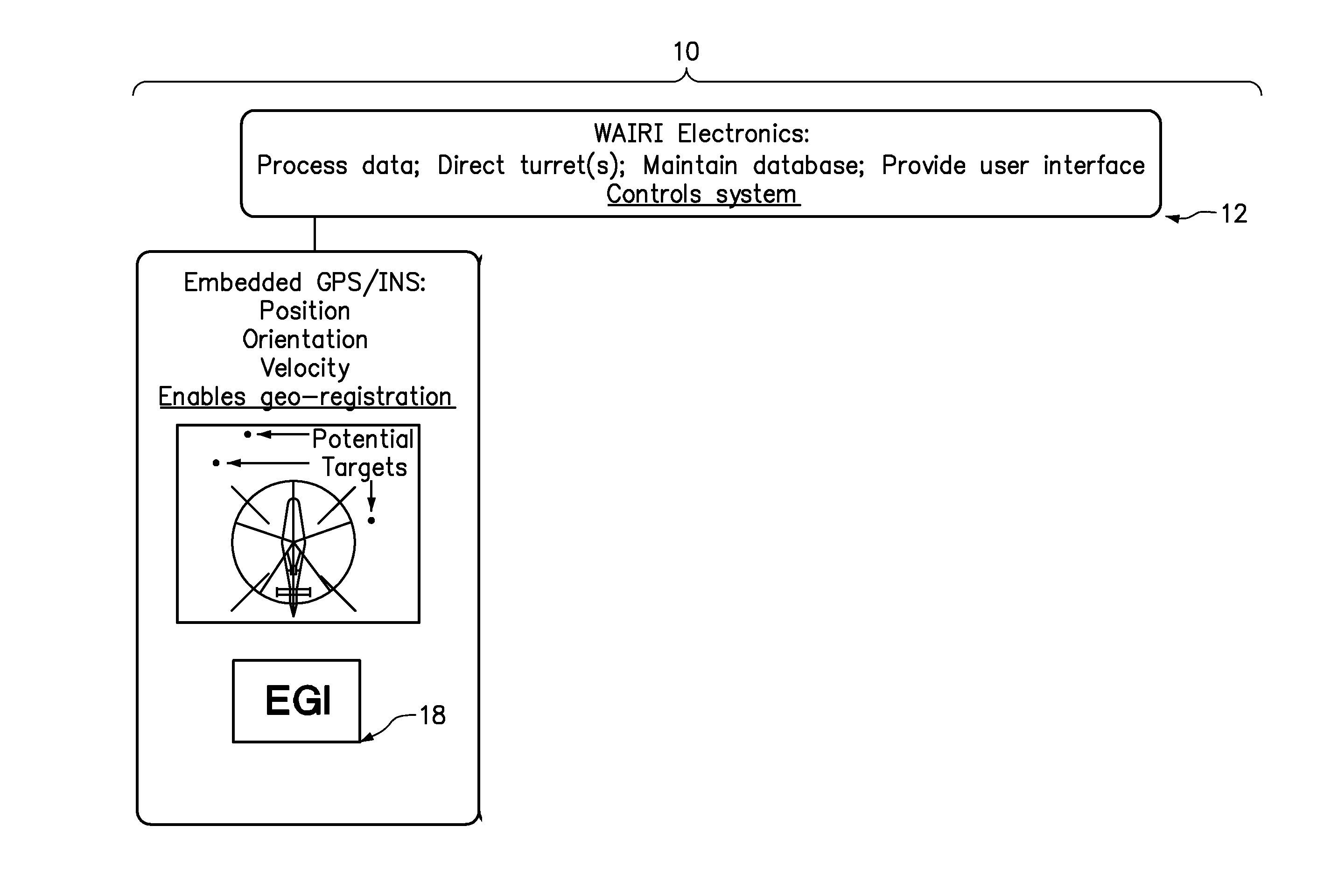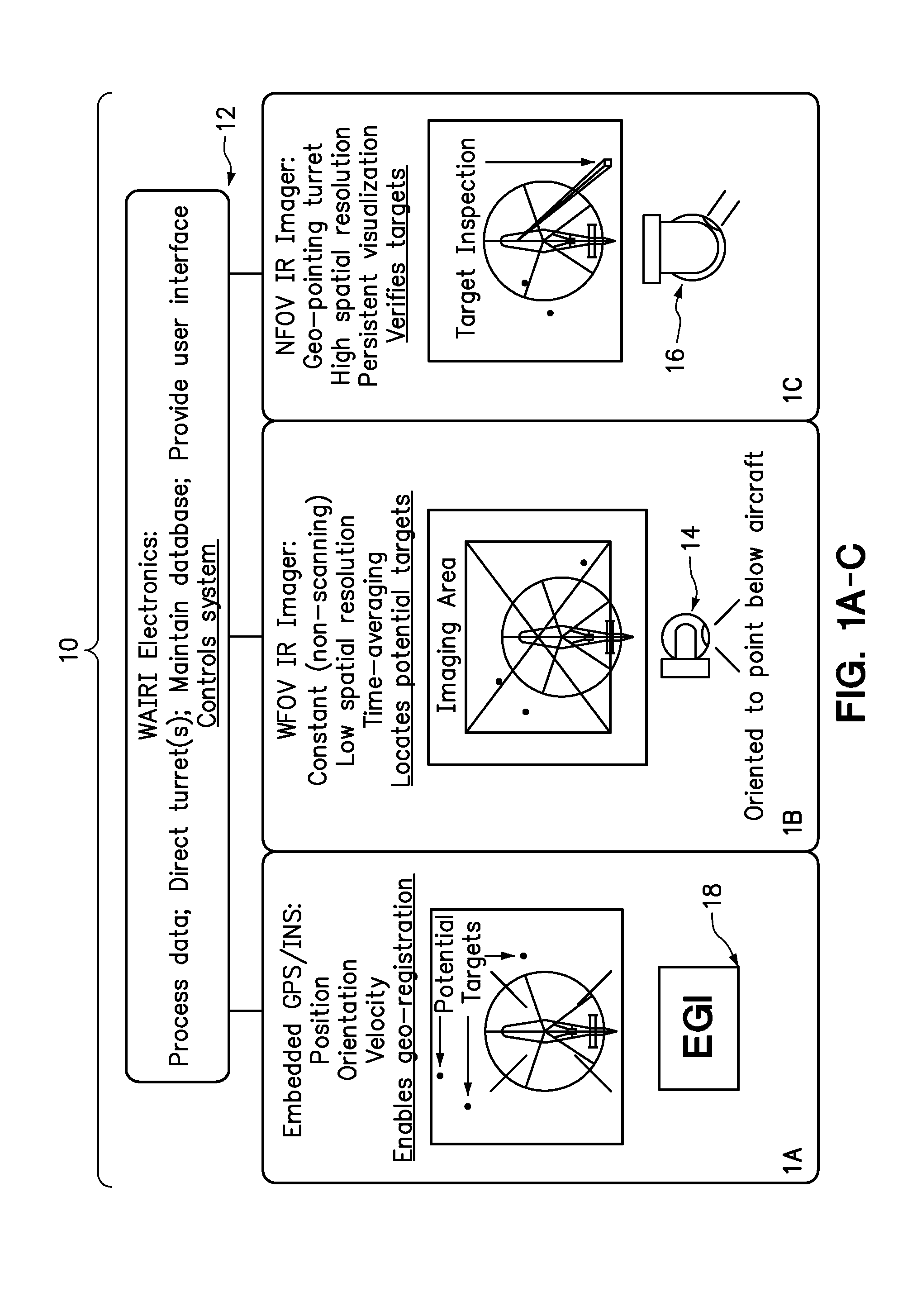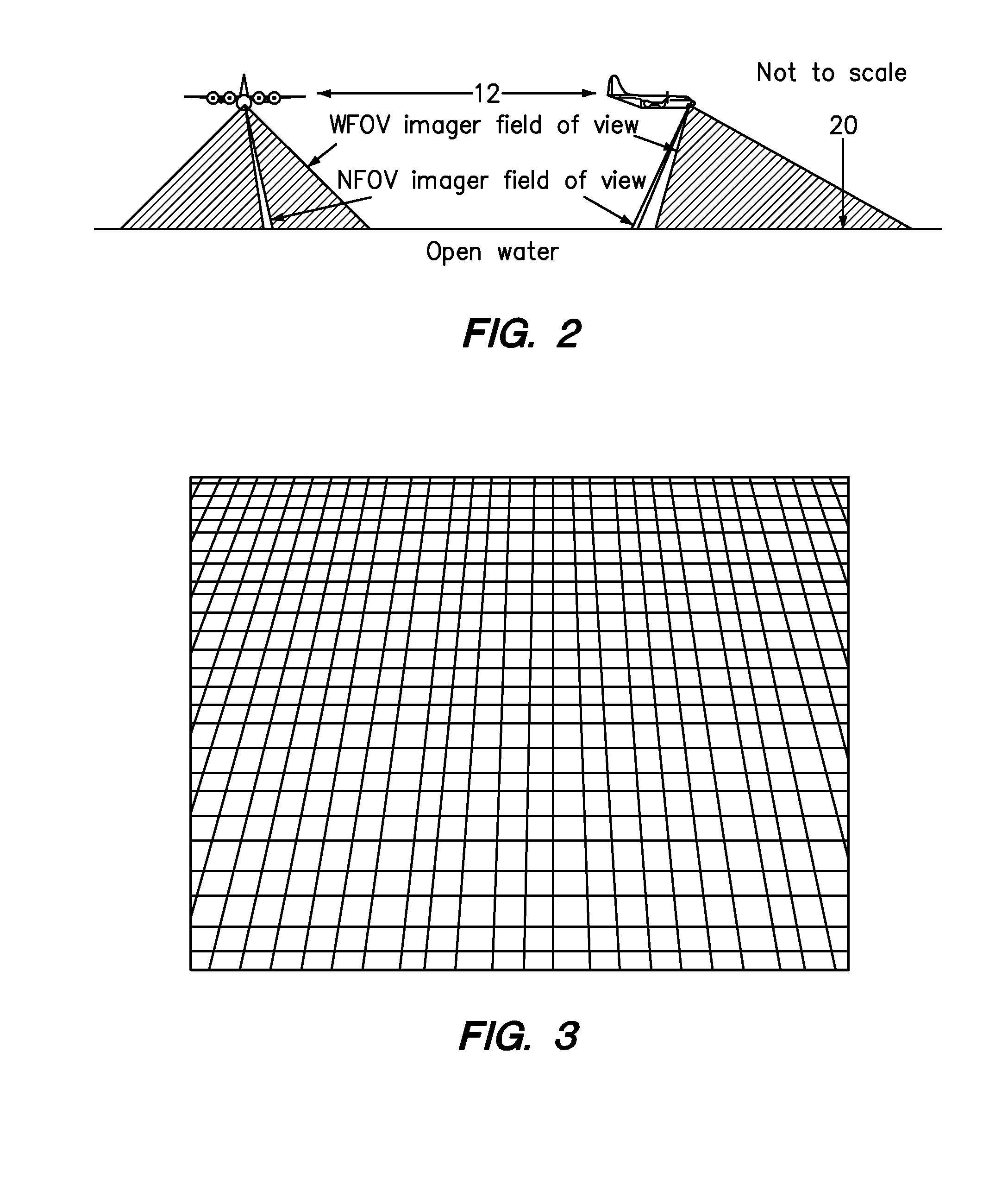Method of searching for a thermal target
a thermal target and target technology, applied in the field of search for small thermal targets, can solve the problems of large limitation of the search capability of small targets, difficult visual inspection, and large size of human targets, and achieve the effect of reducing the difficulty of visual inspection, and improving the search ability
- Summary
- Abstract
- Description
- Claims
- Application Information
AI Technical Summary
Benefits of technology
Problems solved by technology
Method used
Image
Examples
example 1
[0058]FIG. 8 is a schematic illustration of an example of the execution of an algorithm according an embodiment used to implement geo-registered integration with the imager FPA. In reality, target signals do not travel directly down columns of the FPA and integration maps are analyzed with real-time image processors, not just compared on a line-by-line basis. Therefore, this illustration is not meant to be interpreted too strictly.
[0059]Although only twelve sectors are shown here for illustrative purposes, thousands of sectors could be evaluated using an actual WAIRI system. Two targets, labeled α and β, are in water and approaching a SAR helicopter 30. As they pass under the view of the WAIRI system onboard the helicopter 30, the sectors of ocean in which each is located are continuously measured, as are all the other sectors within the field of view of the WFOV imager. Once the sector containing target a passes completely across the field of view, the accumulated signal associated...
example 2
[0060]An experimental setup can mimic this algorithm in effect, even though relying on manually input values for speed and location, as opposed to GPS input. By statically mounting a WFOV imager over a pool of water and dragging a thermal target through the water at a known velocity, the experiment can mimic the effect of flying over a static target. A scale factor must be applied to all elements under test but in all other respects, the algorithm would be the same. The equivalent flight speed and altitude for the imager would be much higher than would typically be used on an SAR mission using FLIR, alone. Although the integration time for any one pixel would be insufficient to conclusively register the presence of a potential target, the time-averaged input from all the pixels imaging a target would significantly increase the statistical power of the measurement. Practical issues such as where the cutoff should be established in terms of the standard deviation of a measurement from...
PUM
 Login to View More
Login to View More Abstract
Description
Claims
Application Information
 Login to View More
Login to View More - R&D
- Intellectual Property
- Life Sciences
- Materials
- Tech Scout
- Unparalleled Data Quality
- Higher Quality Content
- 60% Fewer Hallucinations
Browse by: Latest US Patents, China's latest patents, Technical Efficacy Thesaurus, Application Domain, Technology Topic, Popular Technical Reports.
© 2025 PatSnap. All rights reserved.Legal|Privacy policy|Modern Slavery Act Transparency Statement|Sitemap|About US| Contact US: help@patsnap.com



